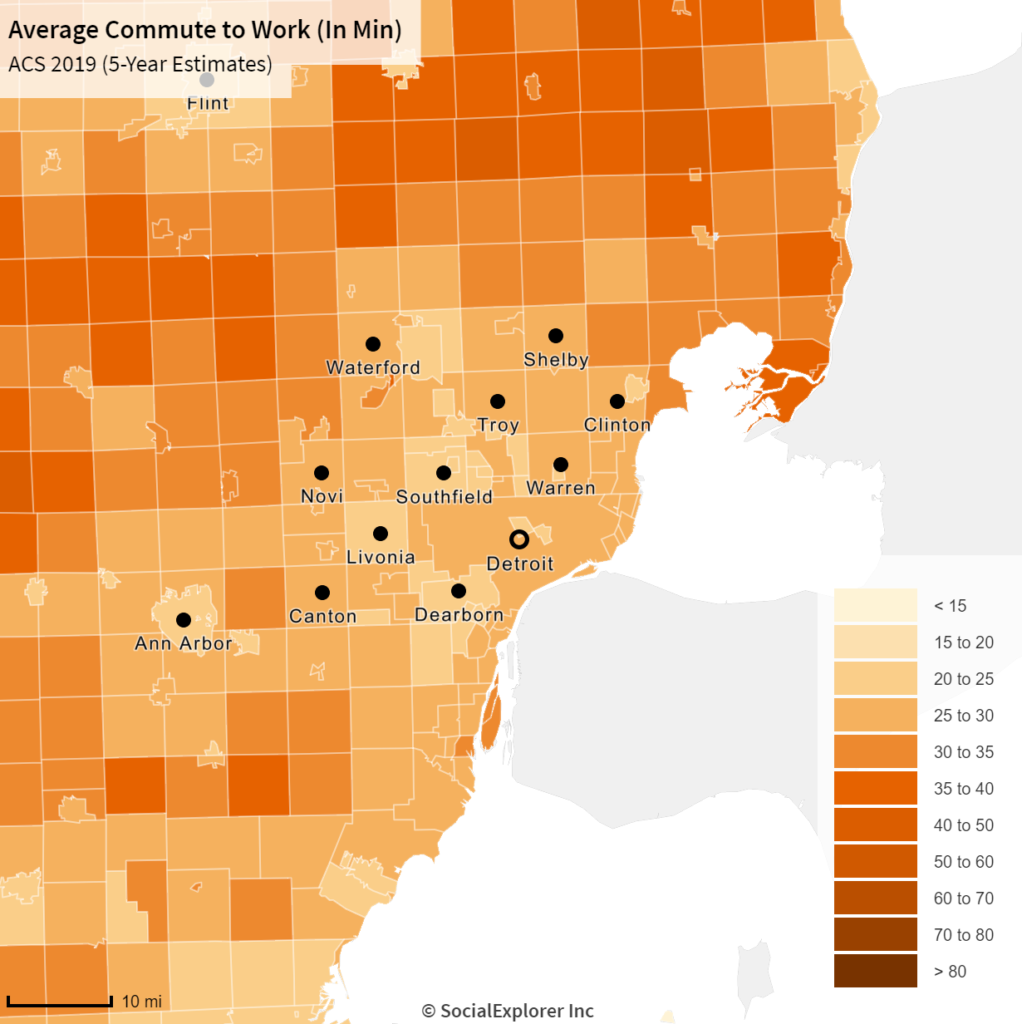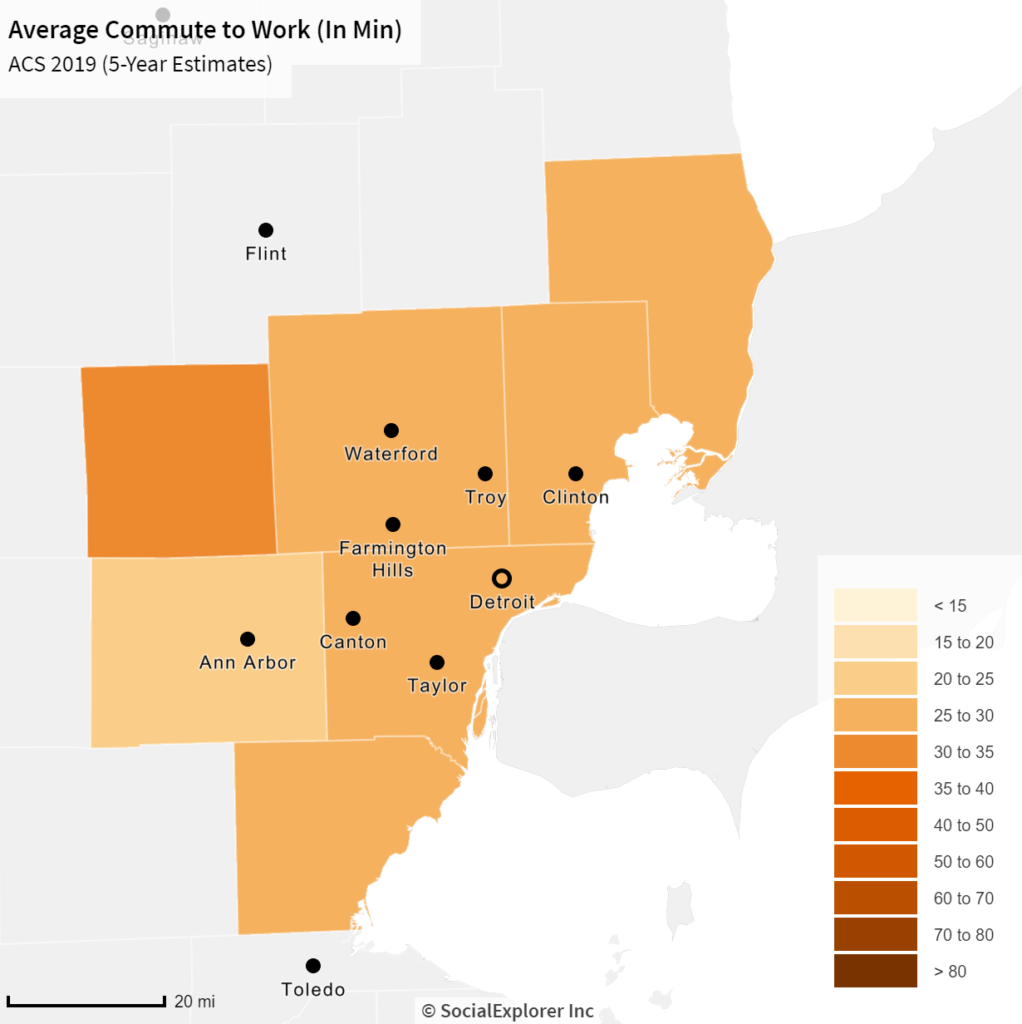In all Southeastern Michigan communities more than 70 percent of residents with a job commuted to work by some mode of transportation, whether it be by vehicle or a mode of public transportation in 2016, according to U.S. Census data. In our sprawling region, where cars are king, suburban life has long dominated and road infrastructure is failing, it is no surprise that the average commute time for the region is 30 minutes. However, in 61 of the region’s communities more than 50 percent of commuters experienced a commute time above 30 minutes in 2016.
At the level of counties, Livingston County had the longest average commute time in 2016 at 32 minutes, followed by St. Clair County at 29 minutes. When considering individual communities, there were only three communities where the average commute time was above 40 minutes; these communities were: Berlin Township (40 minutes), Riley Township (41 minutes) and Emmett Township (41 minutes). All three of these communities are located in the more rural areas of the region.
As noted, the data for 2016 shows that 61 communities in Southeastern Michigan have more than 50 percent of commuters experiencing a commute above 30 minutes. Unadilla Township had the highest percent of residents experiencing more than a 30 minute commute at 75; the average commute time for residents in that township was 39 minutes. No city had an average commute time below 20 minutes, and the communities with the lowest commute times either had large employment hubs or were located very close to them. For example, in 2016 commuters in Ann Arbor had the lowest commute time at 20 minutes. Both the University of Michigan and University of Michigan Health Care System are located in Ann Arbor, a relatively compact city.
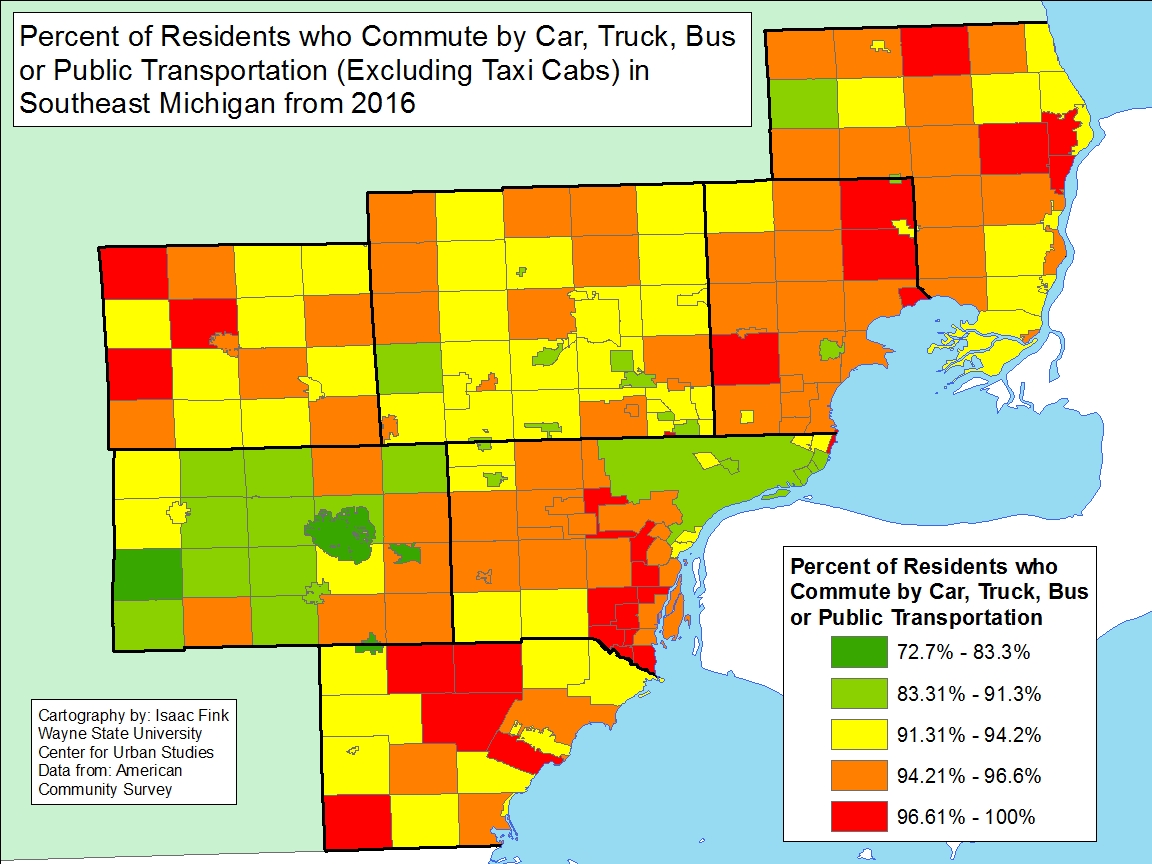
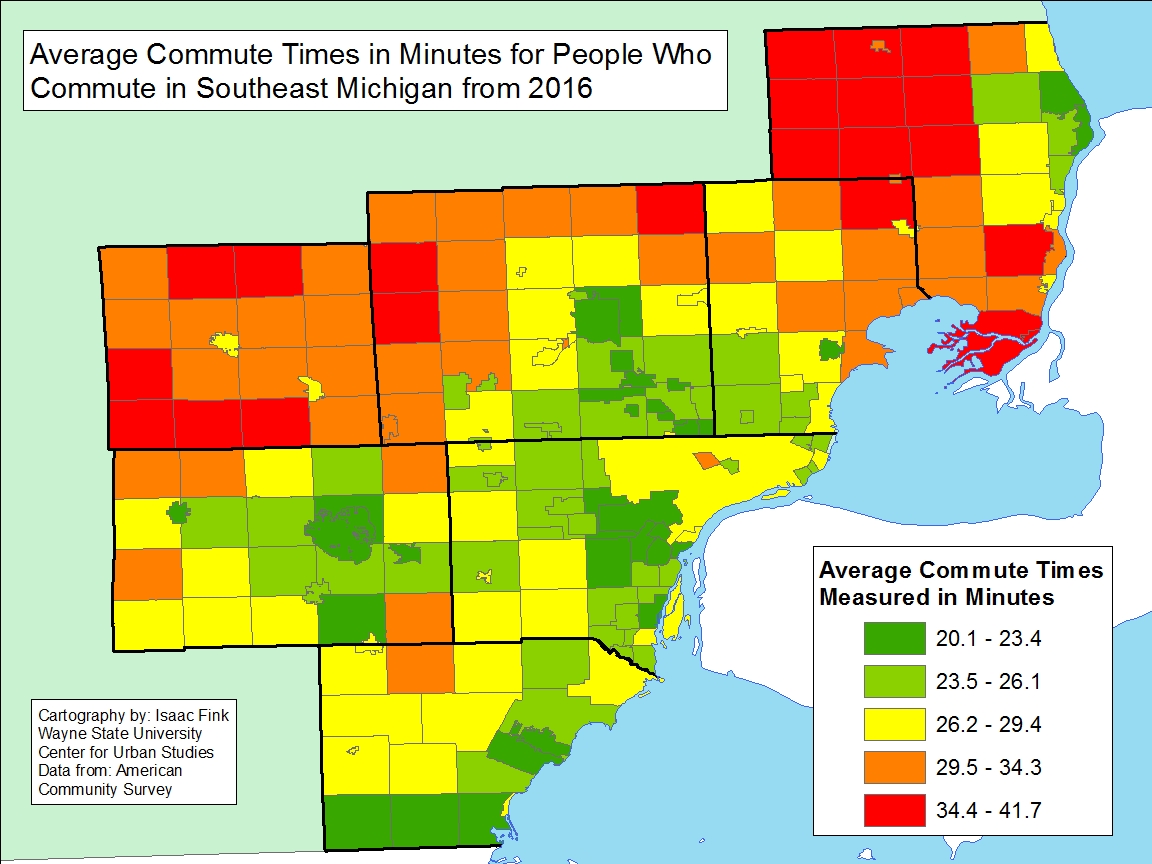
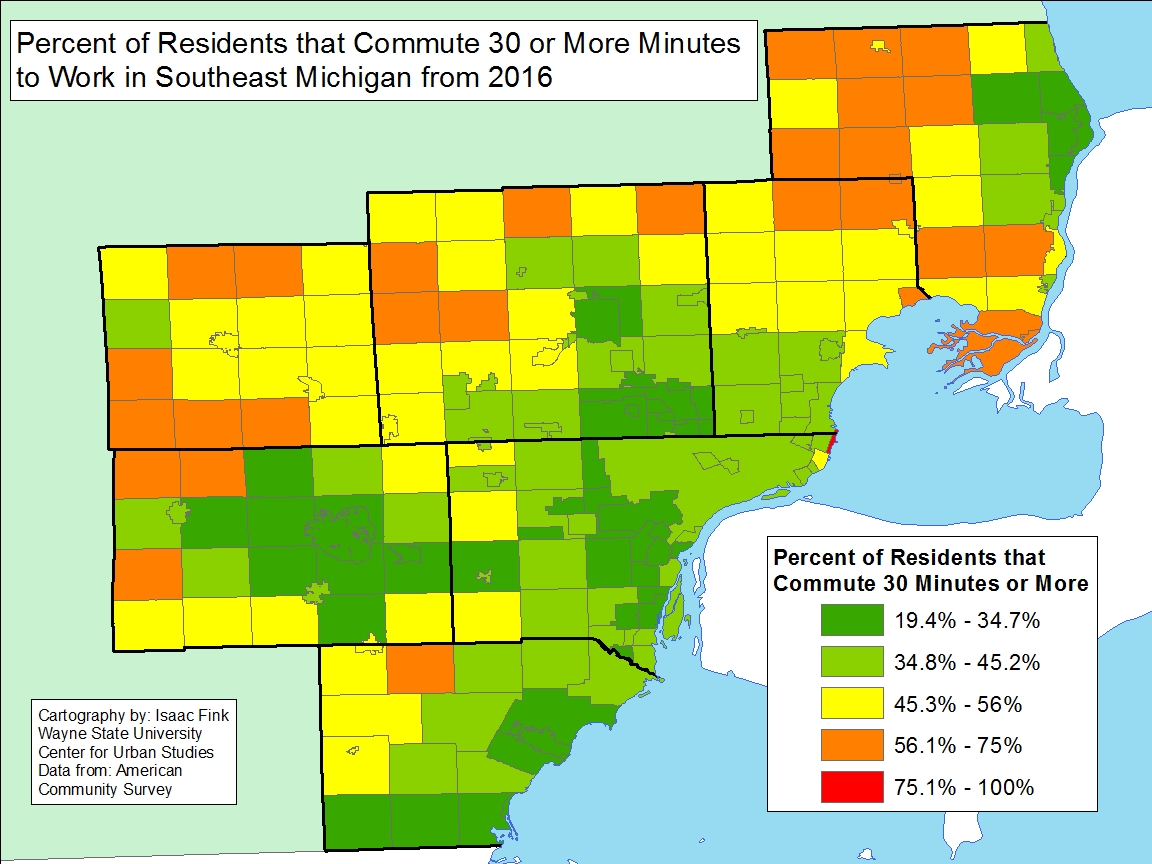
Between 2010 and 2016 the average percent of residents who commuted to work increased only slightly, by 0.3 percent. While this shows that the number of commuters on the road remained relatively the same between 2010 and 2016, other data shows that, arguably, congestion on the roads have increased. According to the data, the average commute time for residents in Southeastern Michigan increased by about two minutes.
There were 30 communities in the region though where the commute time increased by more than 10 minutes. Overall, there were 127 communities that experienced a percent change increase in average commute times between 2010 and 2016. The communities with the largest percent increase in average commute times between 2010 and 2016 were spread across the region, which could very well mean road congestion was increasing due to the region’s road system. For example, the City of Northville had the largest percent change increase in commute time between 2010 and 2016 at 31 percent. Northville is located near to I-275, I-696 and I-96 in the areas where these highways are often under construction and experience regular traffic backups due to congestion.
River Rouge had the second largest increase at 26 percent. Jefferson Avenue runs through River Rouge, but was not easily accessible in the city between 2013 and 2016 due to the Jefferson Bridge being closed. This traffic shift would have caused commuters in River Rouge, and other downriver communities, to have to utilize Fort Street and/or I-75 to commute, meaning there were additional vehicles on these alternate routes.
On the opposite side of the spectrum, there were 78 communities in the region where average commute times decreased between 2010 and 2016. Of those communities, 14 had a decrease in the average commute time by more than 10 minutes.
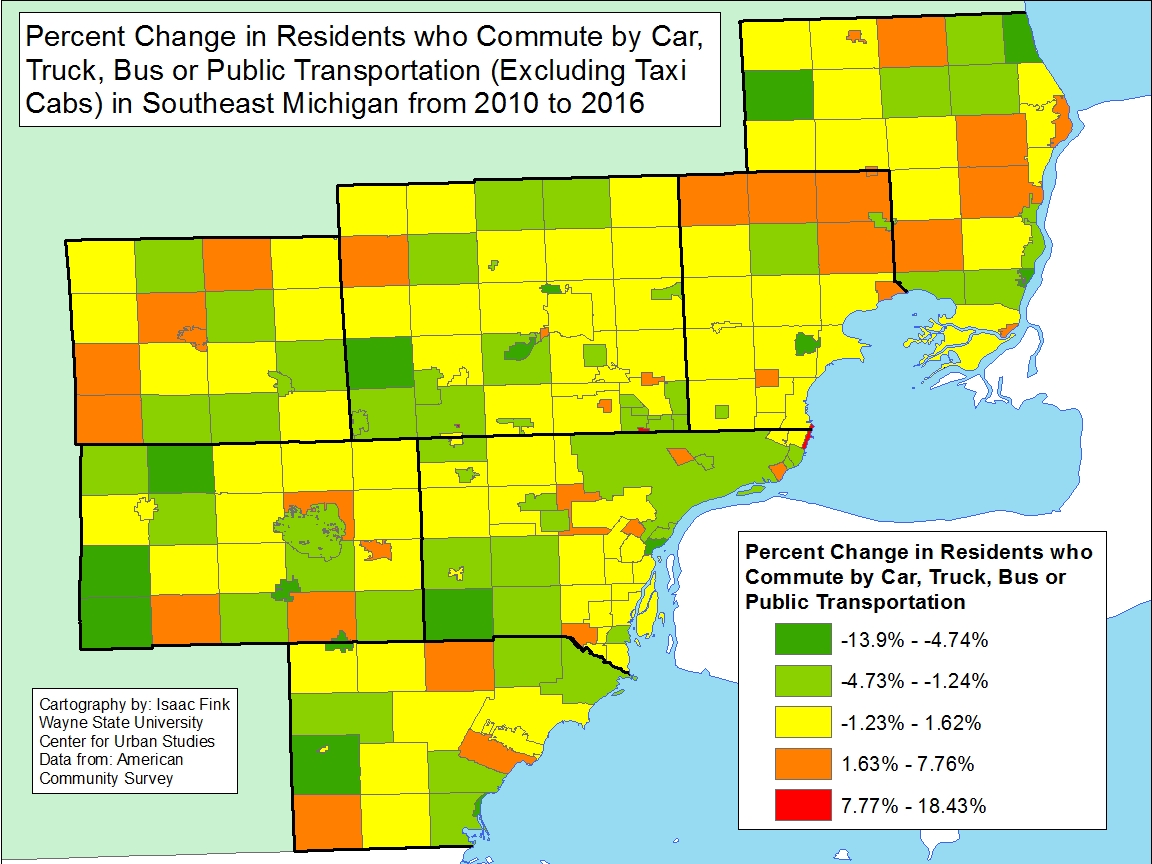
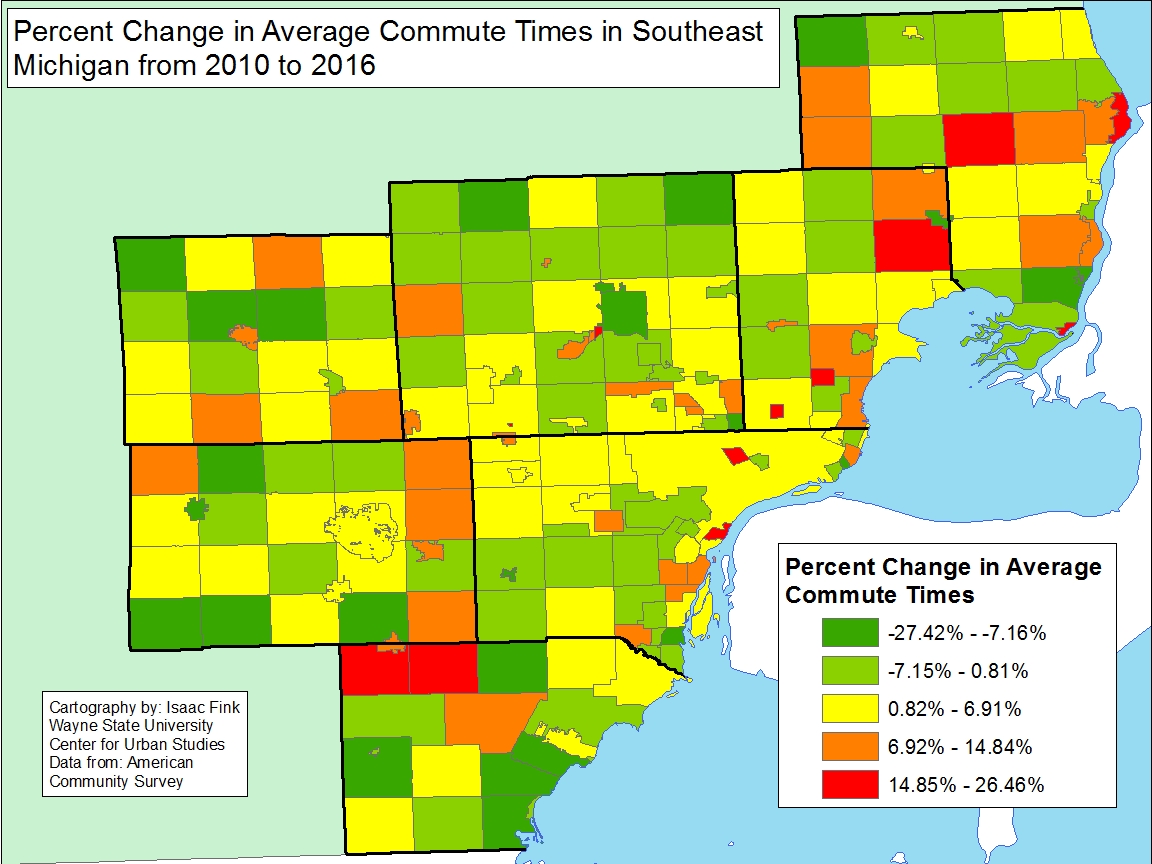
While construction and constricted road systems attribute to traffic congestion, so does the number of vehicles on the road. In Southeastern Michigan we know that there is no comprehensive regional transit system, and instead majority of commuters rely on driving themselves to and from work. A way to decrease traffic congestion is to create a reliable, connected regional transit system that residents would be able to utilize to get to and from work. Increased use in public transportation would decrease congestion, particularly at peak hours, and put less stress on our existing road infrastructure.
